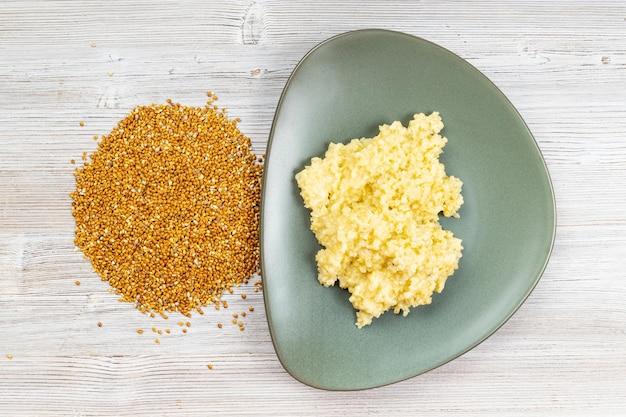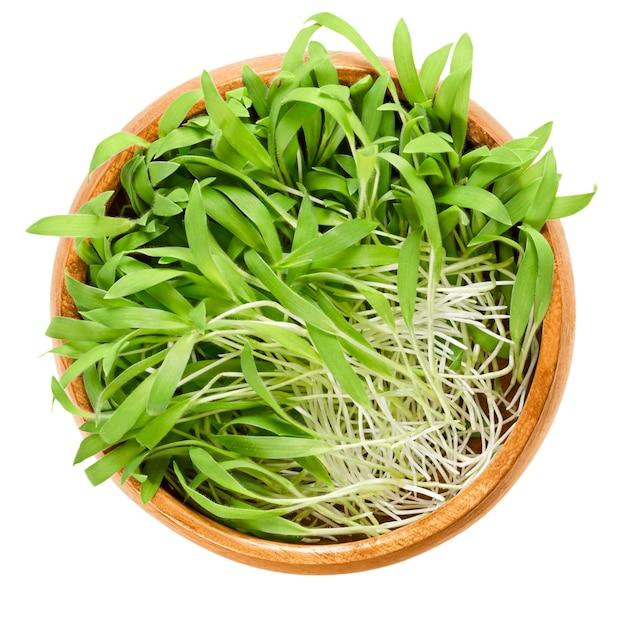Millet seed – it’s a small but mighty grain that has been gaining popularity in recent years. Whether you’re a food enthusiast looking to expand your culinary horizons or a gardener seeking to diversify your crops, understanding what millet seed looks like is essential. In this blog post, we’ll delve into all things millet seed – from its origins and characteristics to its growth and usage.
But first, let’s address a few common questions: What exactly is millet, and where does it come from? Millet is a group of small-seeded grasses that belong to the Poaceae family. It is primarily cultivated in Africa and Asia, where it has been a staple crop for centuries. Millet is renowned for its resilience and ability to grow in arid and semi-arid regions, making it a valuable grain in areas with limited water availability.
So, what does millet seed look like, and can you grow it yourself? Keep reading to find out more about millet seed and how you can incorporate it into your diet or even your garden.
What Does Millet Seed Look Like
Millet seed is a small, rounded grain that might make you wonder if it’s a miniature BB pellet or a lost bead from a child’s bracelet. But no, it’s neither of those things! Millet seed is actually a versatile and nutritious food that has been a staple in many cultures around the world for centuries.
Size and Appearance
Millet seeds are typically small and round, about the size of a pinhead or a tiny bead. They come in a variety of colors, including yellow, white, red, and gray. Each grain has a distinctive outer hull, which is often removed before the millet is processed and sold. The hull is usually light in color and can be smooth or slightly rough to the touch.
Texture and Consistency
When uncooked, millet seed has a firm and solid texture. It’s not soft like a marshmallow or hard like a rock; it’s more like a tiny pebble that you could easily crush between your fingertips. The grains are not sticky or gooey, but they do have a slight chewiness to them when cooked.
Color and Varieties
As mentioned earlier, millet seed comes in different colors. The most common variety is pearl millet, which has a pale yellow color and is often used for human consumption. There’s also finger millet, which is darker and has a reddish or brownish hue. Other types include proso millet, foxtail millet, and barnyard millet, each with its own unique colors and characteristics.
Fun Fact: Millet in Bird Food
You may not realize it, but millet seed is not only enjoyed by humans but also by our feathered friends! Many bird feed mixes include millet as a tasty and nutritious ingredient. So next time you see birds flocking to your backyard feeder, you can imagine them snacking on those tiny, adorable millet grains with their tiny, adorable beaks.
Now that you know what millet seed looks like, you’ll be able to spot it easily in the grocery aisle or even in your bird feeder. These small, colorful grains may be tiny, but they pack a punch when it comes to nutrition and versatility. Whether you’re incorporating millet into your own diet or feeding it to your fine-feathered friends, you can appreciate the beauty and bounty of this humble seed.
FAQ: What Does Millet Seed Look Like
Millet seed is a popular grain that has gained attention in recent years due to its nutritional benefits and versatility in cooking. This FAQ-style guide aims to answer some of the most common questions about millet seed, from its origin and growth to its appearance and uses.
What plant does millet come from
Millet seed comes from the millet plant, a member of the grass family. There are various species of millet, including pearl millet, foxtail millet, and proso millet, each with its own distinctive characteristics and uses.
Where do you get millet
You can obtain millet from various sources. Many grocery stores now carry millet in their baking or health food sections. It’s also available online, where you can find a range of options including whole millet, millet flour, and millet flakes.
Can you grow millet grain
Absolutely! Millet is a versatile crop that can be grown in a range of climates and soil types. Whether you have a small garden or a larger agricultural plot, you can try your hand at growing millet and enjoy the satisfaction of harvesting your very own grain.
Is millet invasive
No, millet is not considered an invasive plant. In fact, it is a relatively low-maintenance crop with a short growing season, making it an excellent choice for both farmers and home gardeners.
What exactly is millet
Millet is a type of grain that is highly nutritious and gluten-free. It has been cultivated for thousands of years and is a staple food in many parts of the world, particularly in Africa and Asia. Millet grains are small, round, and usually pale in color.
Can I carry millets to the USA
Yes, you can legally bring millet seeds with you when traveling to the USA. However, it’s always a good idea to check with the customs regulations of your destination to ensure compliance with any specific requirements or restrictions.
Will deer eat millet
Deer have been known to have a taste for millet. If you’re a wildlife enthusiast or simply want to attract deer to your property, planting millet can be a wise choice. Just be aware that deer may consume the crop before you have a chance to harvest it.
Can you plant millet seeds
Yes, you can plant millet seeds either by hand or using machinery, depending on the scale of your planting. It’s best to sow the seeds in well-prepared soil and provide them with adequate moisture and sunlight to promote healthy growth.
How long does it take for millet to grow
Millet is a relatively fast-growing crop. Depending on the variety and growing conditions, it can take anywhere from 60 to 90 days for millet to reach maturity. Once the grain heads have turned golden and the leaves have dried out, it’s time to harvest.
How do you obtain millet seeds
Millet seeds can be obtained from various sources. You can purchase them from garden centers, online seed suppliers, or even save seeds from mature millet plants in your own garden. It’s important to ensure that the seeds you obtain are of good quality and suitable for planting.
Will millet regrow after cutting
No, millet is an annual plant, meaning it completes its life cycle within one growing season. Once you harvest the mature millet heads, the plant will not regrow. However, you can save the seeds from the harvested crop and plant them in the following year if you wish to continue growing millet.
Is sorghum the same as millet
No, sorghum and millet are two distinct grains. While they may share some similarities in appearance and usage, they come from different plant species. Sorghum is known for its versatility as both a grain and a syrup, while millet is primarily consumed as a grain.
Can you feed millet to chickens
Absolutely! Millet is a nutritious and affordable feed option for chickens. It’s best to offer millet in moderation as part of a balanced diet, alongside other grains, protein sources, and fresh fruits and vegetables.
Can you grow millet from bird seed
Yes, you can grow millet from bird seed. Many bird seed mixes actually contain millet seeds. However, it’s essential to ensure that the bird seed you use is not treated with any chemicals or pesticides that could hinder the germination or growth of the millet plants.
What does sorghum look like
Sorghum grains are small and round, similar in size to millet seeds. They can vary in color, ranging from white and yellow to red and brown. The grains are tightly packed on a branched seed head, which gives sorghum a distinctive appearance in the field.
When should millet be planted
Millet should typically be planted in late spring or early summer when the soil temperature has warmed up. This ensures optimal germination and growth. However, specific planting times may vary depending on your location and the variety of millet you are growing. Consult local gardening resources for more accurate planting guidance.
Can you grow millet in Florida
Yes, millet can be grown in Florida. The warm and humid climate of Florida can be well-suited for growing millet, especially during the summer months. However, it’s essential to choose varieties that are best adapted to the specific conditions of your region.
Is millet easy to grow
Millet is generally considered easy to grow, making it an excellent choice for novice gardeners or those looking for a low-maintenance crop. It has good resistance to pests and diseases and can tolerate both drought and high temperatures, making it a reliable choice for various climates.
Will millet reseed itself
While millet is an annual crop and does not reseed itself naturally, some seeds may fall to the ground during harvesting, which can lead to volunteer plants in the following growing season. If you allow these volunteer millet plants to grow, they may produce a new crop without additional effort from you.
Now that you have a better understanding of millet seed and its characteristics, you can confidently explore its various uses in cooking, feed for animals, or even as an attractive addition to your garden. Experiment with this versatile grain and enjoy its many benefits in your daily life.

